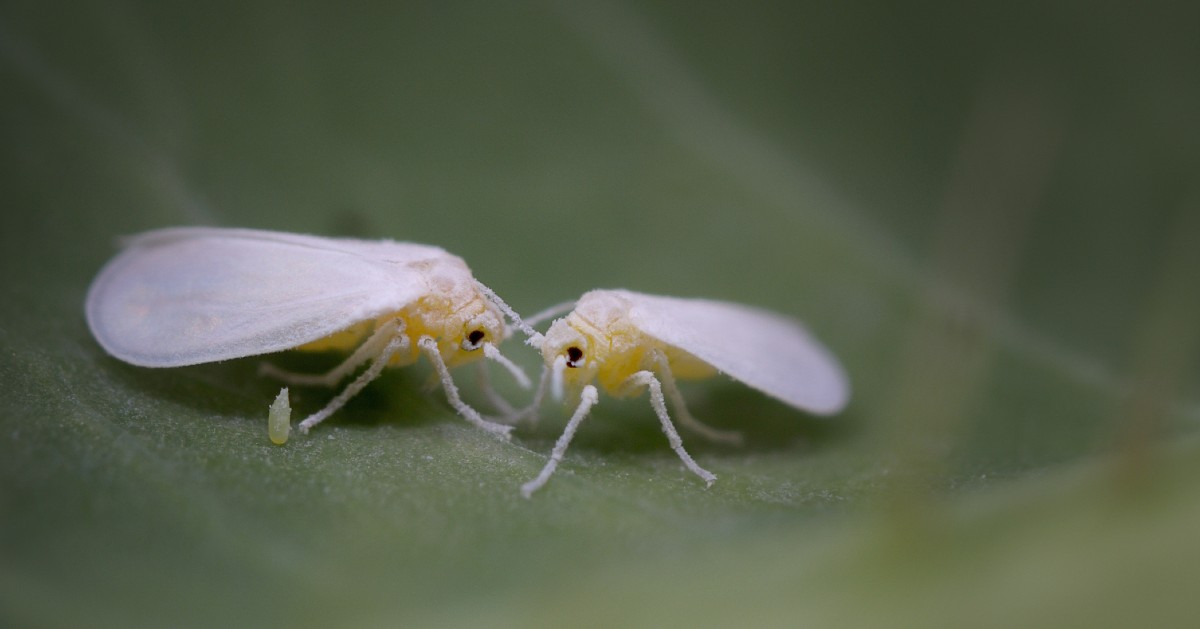Homeowners in California have become accustomed to the many insects that reside in the state including aphids and whiteflies. Both can be a nuisance, and both can be damaging to your landscaping, plants, and garden.
Aphids in California
Aphids in California are identifiable by their tiny size and pear-shaped body equipped with long legs, two rear cornicles, and a set of antennae. Due to their small size, they are not easily detected. Depending on the type of aphid, the insect may be red, yellow, black, or brown in color. Aphids usually feed in a large group doing significant damage to plants. Several signs to look for to determine if aphids are present include yellow leaves or leaves that are curling, misshaped, rotting, and decomposing. The insects also leave behind a secreted sticky residue on the plants called honeydew, which attracts other insects, such as ants, resulting in more plant damage. The residue may also be found on non-plant items.
Aphids do not have a picky palate. They dine on a variety of items in the garden including fruits, buds, flowers, stems, and roots. The damage is caused by the aphid piercing the plant’s tissue to suck out vital juices. While feeding, it is possible for aphids to transmit viruses to their food sources.
What are Whiteflies?
California whiteflies can be found in all parts of the state. Infestations in Southern California occur during the summer from July to mid-August. In the coastal areas, whiteflies are visible year-round, but more active when the weather goes from warm to hot. In areas where the climate is mild, the insects overwinter on vegetables, trees, and plants. Whiteflies are related to other sucking insects such as aphids causing similar damage such as curling leaves and yellowing and browning leaf discoloration and impacts the yield produced by the plant or tree. Another sign is the growth of a soot-like mold on the plants. The flying insects may cause minimal direct damage to gardens and landscaping, but they do have the potential to spread disease specific to plants. For plants that are not in the best of health, a whitefly infestation can kill the plant. If an infestation is lengthy, this, too, can kill the plant(s).
What to Do to Help Stop Infestations
Tips to help remove aphids:
- Use other plants as decoys that aphids are attracted to such as nasturtium and mustard.
- Use a water hose or other spraying apparatus to wash them away into a container filled with soapy water.
- Introduce natural predators such as green lacewings and ladybugs into your property to help eliminate the aphid population.
Tips to help remove whiteflies:
- Check for activity of ants that usually means there is a nest nearby. Ants serve as protectors by fighting and/or eliminating the threat to whiteflies by predatory insects.
- If the infestation is small, clean the underside of the leaves using a powerful flow of water from a hose to wash away the pests.
- Another option for a small infestation is to clean each leaf by hand using a paper towel or soft cloth with rubbing alcohol.
- Remove and infested leaves as long as the removal will not negatively impact the health of the tree or plant.
When the plants and trees in your yard are experiencing an infestation, professional services from AAI Pest Control can help manage the problem.
AAI Pest Control
With help from our expert technicians, we can inspect your property, plan an efficient approach, then put the plan into action to efficiently remove the aphids and whiteflies creating havoc for your plants. Contact our office and let one of our technicians put your plants and trees on the road to a healthier life.
What You Should Know Aphids and Whiteflies in California Professional Pest Control Services in Tracy CA
Serving Northern California

